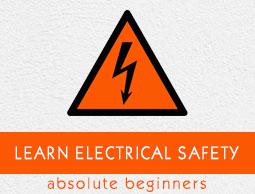Electrical Safety - Power System
The power system consists of a three-stage network – generation, distribution, and transmission. The power system is responsible for the production of electricity with the help of energy such as coal and diesel. All the devices connected to the system such as a motor, circuit breaker, transformer, etc., fall under the umbrella of a power system.
Components of a Power System
There are six main components of a power system. Let us see what the components are −
The Power Plant
The place where power is generated and set for transmitted with the help of a transformer.
Transformer
Transmit electrical energy from one circuit to another.
Transmission Line
The power passes through the transmission line towards the substations.
Substation
Power is transferred to the distribution line through a medium.
Distribution Line
It comprises of low and medium level power lines that connect to the distribution transformer.
Distribution Transformer
From the distribution line, the electricity is distributed to consumers as per an appropriate value.
Causes of Hazards
Electrical hazards are recorded in thousands of number per year, which includes more than 30 fatality cases. Therefore, it is essential to stay away from electrical hazards.
Several factors lead to electricity hazards. The factors are described below in brief −
Faulty wiring
Exposure to loose, frayed and naked wires possess a severe health risk. It is the responsibility of the worker to report cases for damage or faulty cable to the authority as soon as possible. The best way to avoid risk is to inform everyone about it and never try to deal if one is not legally authorized.
Improper usage of equipment
Practicing a safety approach for using electrical equipment is imperative. If a worker is not permitted and trained to use a particular electrical device, then he/she should avoid using it. Sometimes live equipment can seem dead and can cause a severe fatality. A worker should also avoid using electrical tools when on a suspended platform unless he/she is entitled to it.
Overused outlets
All electrical outlets have thresholds. After usage, an outlet starts to fray and poses a risk. When overused, an outlet begins to overheat or generates less power than usual. If a worker experiences an overheating or sparks from an outlet, then he/she must inform the authority rather than dealing with it him/herself.
Exposure to liquid
Water and all other liquids are a good conductor of electricity. Therefore, all workers should always try to keep their electrical equipment away from any liquid. Also, while using electric equipment, all workers must pat their hands dry to avoid any shock or burn.
Need for safety
Electrical hazards are something that should be taken seriously in a workplace. Every organization has to conduct an electrical safety programme for all their workers. Apart from informing them about the hazards, the workers should also take a safety workshop.
Many workers in a workplace do not pay much heed towards electricity hazards. Some think that electrical related incidents are a part of life and some even believe that accidents can never happen to them. What makes it worse is that, some workers think that health risk is a part of their job and it cannot be avoided. Such type of careless attitude among employees results in more work-related injuries. To bring effective changes in worker’s perspective, a safety program is of paramount importance.


